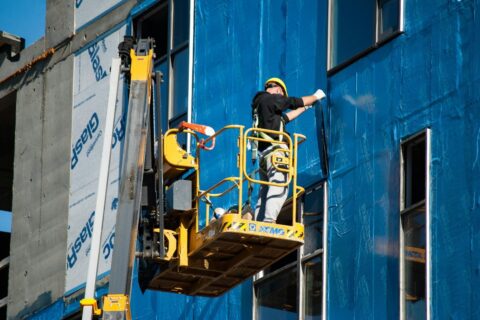Streamlining Glass Installation: From Contracts to Completion

Glass installation is like crafting a giant, intricate puzzle—every piece must fit perfectly, or the whole structure loses its integrity. Well, getting from contract to completion isn’t just about cutting and placing glass. It involves meticulous planning, precise coordination, and seamless execution. Delays, miscommunication, or overlooked details can turn a smooth project into a shattered mess. So, the key? A streamlined approach that keeps everything aligned—just like a well-cut pane slides effortlessly into place.
Optimizing Glass Installation: Ensuring Efficiency from Contracts to Completion
Glass installation is a crucial aspect of modern architecture. It enhances aesthetics while providing durability and functionality. However, managing the process—from contract handling to final implementation—can be complex. By adopting an efficient process, businesses can ensure timely and high-quality installations with minimal disruptions. However, before digging in, it’s essential to understand the key stages of a glass installation project.
The Key Stages of Glass Installation
A smooth glass installation project follows a structured workflow that ensures efficiency and quality at every step. Each stage plays a vital role in preventing delays, reducing errors, and delivering a flawless final result. Refer to the table below to understand the key stages.
| Stage | Description |
| Contract Handling | Defining project scope, timelines, and costs clearly in a contract. |
| Site Assessment | Evaluating site conditions to prevent unforeseen challenges. |
| Material Selection | Choosing the right glass type based on safety and aesthetic requirements. |
| Fabrication & Delivery | Ensuring precise cutting, shaping, and delivery schedules. |
| Installation & Finishing | Proper alignment, sealing, and quality checks. |
| Final Inspection | Ensuring adherence to safety and design standards. |
By following this structured approach, businesses can minimize risks, improve efficiency, and achieve high-quality glass installations that meet both functional and aesthetic expectations.
Optimizing Contract Handling for a Hassle-Free Process
Effective contract handling is the backbone of a successful glass installation project. A well-structured contract minimizes risks, prevents disputes, and ensures smooth execution. To avoid future complications, contracts should clearly define project scope, timelines, costs, responsibilities, and penalties for delays. Here are the essential points to keep in mind for streamlined contract handling.
- Project scope (e.g., number of glass panels, type of glazing)
- Timelines and milestones
- Pricing, including labor and material costs
- Warranty and maintenance agreements
Real-World Lessons: Clear Contracts, Smoother Projects
A commercial high-rise project highlights the importance of detailed contracts. A contractor faced delays due to vague terms on delivery timelines, resulting in costly setbacks. After expert guidelines, they revised their contract handling approach—clearly defining penalties for delays and ensuring supplier accountability. The result? Projects were completed 20% faster with fewer disputes.
Implementing an Efficient Process to Avoid Delays
Beyond having a well-structured contract, implementing strategic planning throughout the glass installation process can significantly minimize inefficiencies in later stages. Some key strategies are:
- Pre-Fabrication: Cutting and shaping glass in advance to reduce on-site work.
- Technology Integration: Using project management software, such as Asana, Trello, and Procore, to track progress.
- Skilled Workforce: Training installers in the latest techniques ensures quality work.
Innovative Strategies for Streamlining Glass Installation
Here are some creative and unique ideas for streamlining glass installation:
- Modular Pre-Installation Kits
-
- Create modular kits with pre-cut glass and pre-assembled framing systems that can be quickly installed on-site. This minimizes time spent measuring and cutting glass, reducing labor costs and speeding up the installation process. Think of it like assembling IKEA furniture—ready to go and easy to install.
- Virtual Site Walkthroughs
-
- Use Virtual Reality (VR) or Augmented Reality (AR) for virtual site walkthroughs during the planning phase. This allows installers and project managers to visualize the space and make adjustments before actual installation begins. It can help identify potential issues early, reducing the need for on-site modifications and ensuring smoother execution.
- Just-in-Time Material Delivery
-
- Partner with suppliers to implement a just-in-time delivery system, where materials arrive exactly when needed. This reduces the risk of storage issues or delays due to materials arriving too early or too late. For example, glass panels can be delivered right before installation, ensuring they stay in perfect condition and minimizing the space needed on-site.
Conclusion
From contract handling to execution, streamlining glass installation is essential for cost-effective and timely project completion. By focusing on clear agreements, well-structured workflows, and modern techniques, businesses can achieve high-quality results with minimal disruptions.
At Glaziers Consulting, we streamline glass installation nationwide. Get connected with expert glazier crews who deliver precision, efficiency, and quality—on time and within budget. Partner with us today for flawless installations! Get your quote today!

